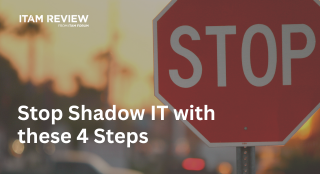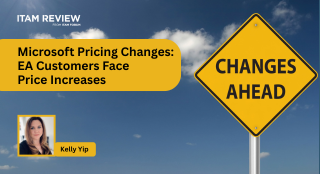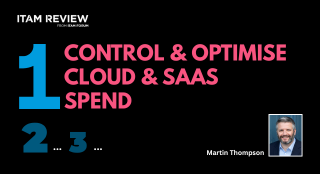Tesco Sues Broadcom and Computacenter for £100M
What’s going on?
UK retailer Tesco says it bought VMware perpetual licences in 2021 with support and upgrade rights running to 2026, plus an option to extend. After Broadcom acquired VMware, Broadcom stopped selling support for perpetual licences and pushed customers onto new subscription bundles. Tesco argues that means paying again for software it already owns, that it cannot get the upgrades and many patches it’s entitled to, and that this puts around 40,000 VMware-hosted workloads at risk, including tills and supply-chain systems.
See: Tesco is suing Broadcom and its reseller Computacenter for at least £100 million.
VMware over time
- Founded in 1998 in Palo Alto, CA, USA
- Rise to prominence. Early-mid 2000s as x86 server virtualisation takes off. Killer feature is vMotion live-migration, introduced in 2003, which made planned downtime largely optional.
- Peak era. Mid-2010s when virtualisation is the default. Gartner called x86 server virtualisation “mature” and at or past saturation by 2016, with new licence growth slowing. (Virtualization Review)
- After the peak. Growth shifts to public cloud and containers. Kubernetes becomes the orchestration standard for containerised apps.
Broadcom/VMware: brief history and market impact
- May 2022: Broadcom announces deal to buy VMware.
- Dec 2023–Jan 2024: VMware by Broadcom ends perpetual licensing and SnS renewals, moves to subscriptions centred on two bundles, VMware Cloud Foundation (VCF) and vSphere Foundation (VSF).
- 2024: Portfolio streamlined, EUC business sold to KKR for $4bn.
- 2024–2025: Channel rationalised, lower-tier partners cut.
- 2024–2025: Customers report large price jumps; EU asks questions after complaints from CIO associations; lawsuits arise (e.g., AT&T), and some are settled.
- 2025: Broadcom asserts very high VCF adoption among its largest accounts and pushes an on-prem private cloud vision with VCF 9.
What has “replaced” VMware’s growth engine?
VMware’s growth engine hasn’t been displaced by a single rival. It’s been thinned by a shift in how we run compute:
- elastic IaaS from AWS, Azure and Google Cloud replacing on-prem host clusters for expansion
- containers with Kubernetes becoming the default for new delivery, automation and portability
- and credible alternatives at the hypervisor layer such as Microsoft Hyper-V and Azure Stack HCI, Nutanix AHV, and KVM via Red Hat and others where platform fit or cost wins.
Why do organisations still run VMware at scale?
VMware remains entrenched for pragmatic reasons:
- operational resilience is baked in, with vMotion, HA and DRS keeping services up and balancing hosts;
- the installed base is huge and the skills, processes and integrations are optimised for vSphere and vCenter;
- for compatibility and risk control, many applications are still VM-first and even container shops commonly run containers on VMs for isolation and consistency (Red Hat: https://www.redhat.com/en/topics/containers/containers-vs-vms);
- the migration reality is sobering, with Gartner expecting only about 35% of VMware workloads to move by 2028, which implies the majority will remain in place for years due to cost, risk and effort (The Register: https://www.theregister.com/2025/09/11/gartner_vmware_migration_advice/).
Broadcom, where software past its prime goes to die?
Broadcom’s approach is to streamline operations. Some might argue it buys software past its prime and squeezes the IP until retirement. The playbook is to buy mature, mission-critical software, compress SKUs, move to subscriptions, focus on top accounts, and monetise the installed base.
The trade body CISPE, talking to Reuters, said this approach is an abuse of customer rights:
“What threatens the economic viability of many cloud services used by customers in Europe, are the massive and unjustifiable hikes in prices, the re-bundling of products, altered basis of billing and the imposition of unfair software licensing terms that restrict choice and lock-in customers and partners,”
Networkworld reports Broadcom blocking patch access for perpetual license holders with expired support contracts (The source of the AT&T dispute).
Broadcom would counter by suggesting its revenue and margins suggest customer adoption of their technology is strong. Broadcom reports very high VCF uptake among its largest customers. As Paul Turner put it: “87% of our 10,000 largest customers are adopting VCF.” Hock Tan told analysts that more than 90% of the top 10,000 have converted to VCF subscriptions.
Broadcom is profitable because it has put up prices on products and ways of working that have become institutionalised for many large IT shops. Or, is it because Broadcom is an innovative partner? You decide. Let me know in the comments.
The business risk of Broadcom’s strategy
Tesco faces immediate exposure if Broadcom will not honour legacy support and upgrade commitments: limits on support and patching, upgrade constraints that could block VCF 9 rights, unplanned spend to buy duplicate subscriptions, and material operational risk because VMware underpins c. 40,000 workloads across stores, tills and logistics.
That is continuity, security and financial risk in one bundle. For any VMware-reliant organisation, the picture is similar: price and term uncertainty at renewal, security and compliance risk if patch access is curtailed, partner route disruption, and high switching costs if you are pushed to accelerate migration off VMware.
Why Tesco’s action matters for precedent
This case tests whether a supplier can change support terms for perpetual licences after an acquisition. A court ruling could clarify the enforceability of upgrade and support promises. There is precedent for courts compelling vendors to maintain support where contracts required it, as in HP v Oracle over Itanium, and cases where licence interpretation favoured the vendor, as in SAP v Diageo on indirect access. The Register article above suggests Tesco’s case will likely settle privately, which sets no binding precedent and leaves most enterprises facing the same negotiation dynamics.
Channel Impact
I find it interesting they’ve dragged Computacenter into the mix on this dispute and it poses an interesting challenge for channel partners. Tesco is chasing the party it paid: the seller of record that promised price, support, and upgrade rights. It pulls the channel right into the firing line.
When policy changes after an acquisition, the PO counterparty carries the risk unless the contract specifically passes it upstream. Expect tighter pass-throughs, change of control protection, real price protection and harder liability caps.
FAQ: perpetual vs support and patches
Does a perpetual licence include upgrades and support?
No. Perpetual gives use rights to a version. Upgrades and support depend on your Support and Subscription terms. Broadcom confirmed it ended the sale of perpetual licences and SnS renewals in December 2023 as part of the shift to subscriptions. Broadcom News and Stories
If my SnS has expired, do I still get security patches?
Broadcom says perpetual customers on supported vSphere versions (7.x, 8.x) can access zero-day security patches even without active support. Check scope and versions, and document any delays. Support Portal
Is this legal?
In enterprise software, your rights come from the contract (licence + SnS/maintenance terms) and the vendor’s lifecycle policy. There’s no general legal duty to provide upgrades or patches after SnS expires unless you contracted for it. Consumers have more protection, for example in the EU suppliers would need to provide protection for as long as the consumer would expect or is reasonable, for enterprises you live and die by the contract.
Any questions – please leave a comment. (This is not legal advice; this is just my interpretation of the situation).
Can’t find what you’re looking for?
More from ITAM News & Analysis
-
Stop Shadow IT Before It Hurts Your Business
Shadow IT often spreads quietly and quickly becomes a serious risk. Just look at the UK-based supermarket chain Co-op. A little-known remote maintenance tool used by an external IT provider was compromised. The result? Nearly 800 ... -
Why ITAM Forum Should Join the Linux Foundation: My Rationale and Your Questions Answered
TLDR. ITAM Forum has the opportunity to join the Linux Foundation as a stand-alone, self-funded project. This article covers a) What’s happening b) Why I think it’s a great move for the ITAM Forum and c) ... -
Microsoft Pricing Changes: EA Customers Face Price Increases
From 1st November 2025, Microsoft will remove all tiered pricing for Online Services under the Enterprise Agreement. This means all customers renewing or purchasing new Online Services after this date, will receive standard level A pricing ...
Software Licensing Training
Similar Posts
-
Stop Shadow IT Before It Hurts Your Business
Shadow IT often spreads quietly and quickly becomes a serious risk. Just look at the UK-based supermarket chain Co-op. A little-known remote maintenance tool used by an external IT provider was compromised. The result? Nearly 800 ... -
Why ITAM Forum Should Join the Linux Foundation: My Rationale and Your Questions Answered
TLDR. ITAM Forum has the opportunity to join the Linux Foundation as a stand-alone, self-funded project. This article covers a) What’s happening b) Why I think it’s a great move for the ITAM Forum and c) ... -
Microsoft Pricing Changes: EA Customers Face Price Increases
From 1st November 2025, Microsoft will remove all tiered pricing for Online Services under the Enterprise Agreement. This means all customers renewing or purchasing new Online Services after this date, will receive standard level A pricing ... -
Shaping the Future of ITAM – We Want Your Input
The ITAM Forum is currently running a survey to capture hot topics and pressing challenges facing the ITAM profession. The insights gathered will guide our editorial focus and community content for the year ahead. Early responses ...




